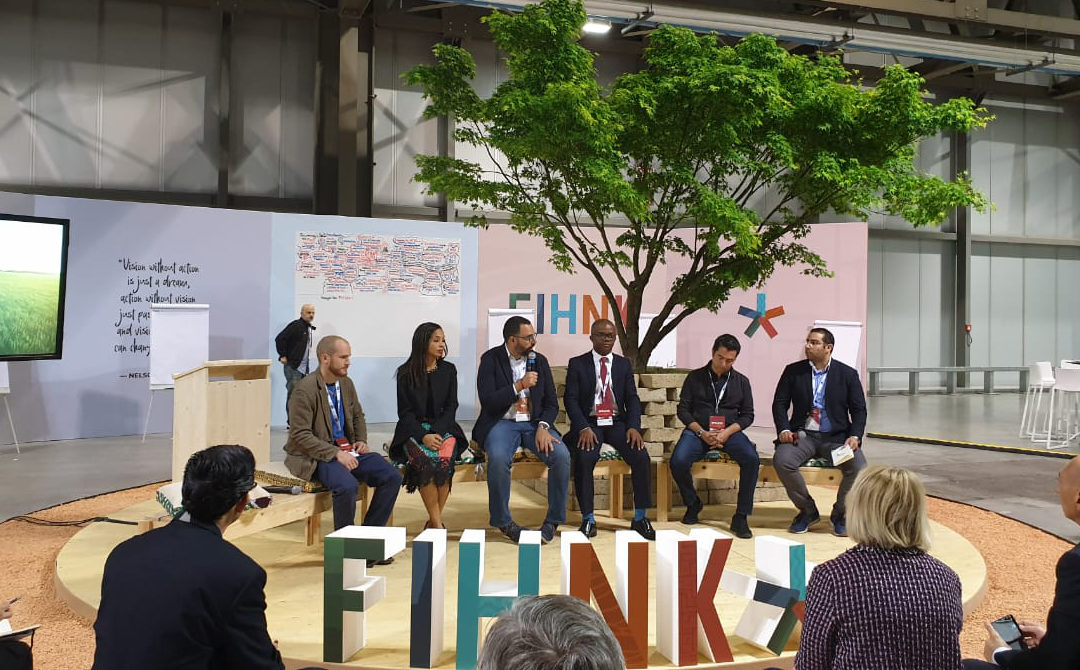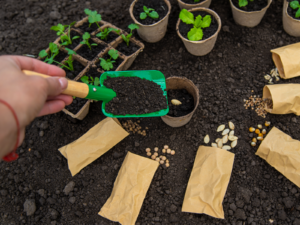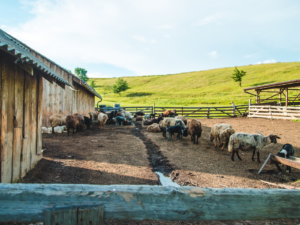
The Agrytech team and startups joined the Global Food Innovation Summit Seeds&Chips in Milan, Italy, from 6 to 9 May 2019 focusing on innovation, resources and technologies connected to food.
Seeds&Chips Global Food Innovation Summit
Every year since 2015, the Seeds&Chips Global Food Innovation Summit has brought together young people, policymakers, entrepreneurs, institutions, startups, corporations, universities, accelerators and incubators, NGOs, investors and opinion leaders from all over the world, setting the stage for big and small players to come together making their voices count.
Four startups from the Agrytech Accelerator participated in the summit including Mushtic– who are creating natural packaging material using mycelium, FoodCheck– who have developed an automated, autonomous device that monitors and tracks the location of products, all while providing stock management in real time, Quadra– who is developing an optical fruit sorting machine, capable of sorting different types of fruits based on the international standards of size, color and defects, and Rigino– who are creating a complete traceability platform serving entire value chains across multiple industries.
Startups participated in different activities in the summit from exhibiting, to conferences to one-on-one meetings with industry leaders and potential investors and partners. Mushtic even participated in the Modelez Pitching competition.
Real Impact and Innovation
Ramy Boujawdeh, Deputy GM of Berytech and Director of the Agrytech Program, joined the hundreds of international speakers, along with investors and policy makers talking about the distribution of food resources, the need to cut waste, the future of the retail industry and precision agriculture.
His intervention in the FIHNK space dedicated for Africa focused on creating spaces for real impact and innovation. He discussed the components that are needed to help new ventures thrive as a coherent ecosystem based on his experience with Berytech and the Agrytech Program.
“We’ve realized that to push innovations in agriculture and agri-food, we need to attract people with different skill sets to these two sectors. We are working a lot with youth who come from engineering, computer science and technology backgrounds to push the knowledge economy into the agriculture sector. We all need to feed the planet. In the past we used to say that agriculture was half-science, half-art and now we need to look at agriculture as being half-science, half-engineering.
Boujawdeh explained that for an ecosystem to strive, we needed to look at several components. The first component is understanding the market needs. “We need to look at how can we get the youth who are studying in universities and urban settings to understand the challenges in agriculture and the opportunities they have in the sector. There are many opportunities especially in the value chains that could be developed that they are not necessarily exposed to.”
He continued that the second component was to get the education system to cooperate and collaborate. “We need to look into how to get universities and researchers to look at the agri-food value chain and see how they can play a role in pushing innovation and research into those sectors to develop and export.”
Boujawdeh went on to share that “the third component was the government. “We need to check what the right environments are that they are setting in terms of financing, in terms of creating companies and closing companies and so on to be able to get people to take the risk to get in. We also need to look at the access to financing at the different startup phases: grants, loans, subsidized loans, etc. Are we able to encourage people to take the risk and move in? Do we have mentors and coaches available around those people that we can connect them to? Do we really create the link between the people who want to create value and the farmers that are using it?”
Boujawdeh concluded, “We see many innovations and drones and apps and so on that focus on developed countries, but do we have people that are developing solutions for the farmers of our communities? Are they able to speak the same language, create the user experience, the right solutions that are able to interact with those farmers? Do they understand their mindsets to get them to believe in their solutions? Do we have interactions with cooperatives, with community leaders, with municipalities, with elders in those communities to be able to influence, change and work with them? All of that plays a role in building a sustainable and growing environment.”
See the album with photos and videos of the trip here.








